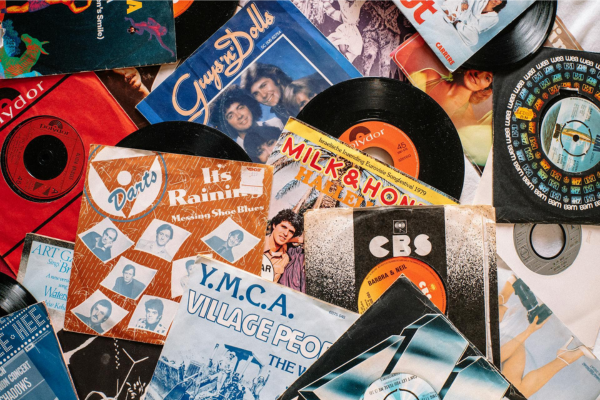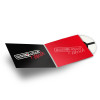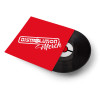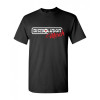Releasing a first album is a pivotal step for any artist. It's much more than just a recording: it's a business card, a statement of intent, and sometimes even a dream coming true after years of work. However, between composition, recording, promotion and distribution, this adventure can quickly turn into an obstacle course.

The creation process: finding your musical identity
A good album is above all about having a strong identity. And this identity doesn't happen by chance. It's built through your influences, your experiences, your artistic desires... but also a good amount of work.
Lay the foundations
Before writing the first riff or laying down the first vocal line, ask yourself what you want to convey. What makes your project unique? What messages do you want to send? By answering these questions, you can build a coherent album that truly reflects who you are.
Compose with intention
Your first album doesn't need 15 tracks. Better to have 8 strong and well-produced songs than a project that's too long and uneven. Think of the album structure as a journey. Alternate tempos, work on transitions, think about track order. These are the small details that capture attention and make people want to listen until the end.
Perfect your demos
Before going to the studio, demo everything you can at home. Not only will you save time and money once there, but you can also experiment without pressure. Test different versions, arrangements, atmospheres. This preparatory work is often underestimated, but it makes a real difference.
Promotion: don't let your album go unnoticed
You've finished your composition? Congratulations. But you still have a major challenge: getting people to listen to it.
Prepare your promo plan ahead
Successful promotion starts before the release. It's recommended to launch your communication strategy at least three months in advance. This gives you time to prepare visuals, shoot one or two videos, schedule posts and contact media.
Create a precise calendar: announcements, teasers, release date, videos, interviews... The more organized you are, the more impact you'll have.
Work on your storytelling
Your album is unique. Tell us why. What inspired you? What memorable anecdotes during recording? What message do you want to convey? Use social media to share these behind-the-scenes moments. This creates a real connection with your audience, far beyond the music.
Use the right channels
- Instagram and TikTok are ideal for excerpts, making-of, and short content.
- YouTube for clips, vlogs or live sessions. Facebook remains effective for events or long posts.
- Your personal website or your Distrolution store for direct sales.
And most importantly, contact specialized media: webzines, radio stations, podcasts. A good hook, a well-crafted press kit, and some personalization in your messages can open many doors.
Choosing the right format: digital, physical... or both?
In the streaming era, one might think physical formats are obsolete. However, they still have a bright future ahead, especially in alternative scenes and niche markets.
Digital: a must-have
Your album must be available on all streaming platforms. For this, you need to go through a digital distributor like DistroKid, TuneCore, CD Baby, iMusician, etc. Make sure all metadata is properly filled out (titles, ISRC, credits...). And don't forget to plan the release at the right time: avoid days when big albums are released if you want to maximize visibility.
Physical format: to create a strong bond with your fans
CD, vinyl, cassettes... physical formats are far from dead. It's an excellent way to offer something tangible to your audience, especially if you add a personal touch: illustrated booklet, limited edition, autograph.
Quick tip: offer your album bundled with a t-shirt or poster. These types of offers often work best to boost sales.
Merchandising: more than just a t-shirt
Too many artists still see merch as a bonus. However, it's a real source of income, and above all, a very powerful tool for building loyalty.
Focus on design
Your merch visuals are as important as your album cover. If your t-shirt looks like WordArt template, nobody will wear it. Invest in a designer or graphic artist who understands your universe and can offer you something qualitative and original.
Offer suitable products
No need to release fifteen items from the start. Begin with effective basics: t-shirts, tote bags, caps or posters. Test what works with your audience, then expand later.
Sell smartly
At concerts, always plan for a visible stand with stock, a card reader if possible, and a good presentation. Online, use Bandcamp, BigCartel, Shopify, directly your website or ideally: from your Distrolution store. And remember to offer pre-orders to finance production and avoid unsold items.
And after? Keep your album alive
Releasing an album is one step. Keeping it alive is another.
Play it live
Even if you don't have access to large venues yet, organize local shows, opening acts, showcases. Live performance remains the best way to reach new audiences and create a real fanbase.
Stay active on social media
Keep talking about your album after its release. Share listener feedback, reviews, live excerpts. Create content around it: alternative videos, acoustic sessions, demo versions.
Prepare for what's next
Analyze what worked well and what didn't. Look at the statistics, listen to feedback, and start thinking about the next project. A good second album shows evolution without betraying who you are.
In summary
Making your first album successful isn't about luck. It's a mix of artistic work, communication strategy, and relevant choices. But it's also - and most importantly - a human adventure. You'll have doubts, struggle, rewrite... and in the end, you'll come out stronger.
So take the time to do things right. Surround yourself with trustworthy people. And remember: it's not just a record. It's the beginning of your story.







